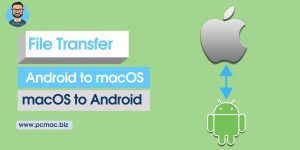Raspberry Pi, a popular single-board computer, can be a versatile tool for various projects. One such project is using a Raspberry Pi as a USB Video Looper, allowing you to play videos in a loop from a connected USB storage device. In this tutorial, we will explore how to set up a Raspberry Pi as a USB Video Looper using the pi_video_looper.git repository. Read Full Article
Step 1: Setting up the Raspberry Pi
Begin by setting up your Raspberry Pi. Install the operating system, such as Raspbian, and ensure that your Raspberry Pi has an internet connection for the installation process.



Step 2: Installing the Dependencies
To get started, you’ll need to clone the pi_video_looper.git repository. Open a terminal or SSH into your Raspberry Pi and execute the following command:
git clone https://github.com/adafruit/pi_video_looper.git
Change to the cloned repository by entering:
cd pi_video_looper
Next, use the provided script to install the necessary dependencies:
Step 3: Connecting the USB Storage Device
Connect the USB storage device that contains your video files to one of the USB ports on the Raspberry Pi. Ensure that the USB device is properly recognized and mounted.
Step 4: Configuring the Video Looper
Now it’s time to configure the video looper. Open the config.txt file in a text editor using the following command:
nano config.txt
Inside the file, you’ll find a variable named VIDEO_PATH. Set this variable to the path where your video files are located on the USB storage device. For example:
VIDEO_PATH = /media/pi/usbdrive/videos
Save the changes and exit the text editor.
Step 5: Starting the Video Looper
To start the video looper, execute the following command in the terminal:
./video_looper.py
The script will scan the specified video path and begin playing the videos in a loop. Sit back and enjoy the seamless video playback.
In Conclusion
By utilizing the pi_video_looper.git repository, you can transform your Raspberry Pi into a USB Video Looper effortlessly. Whether it’s for displaying promotional videos, art installations, or simply playing a looped video playlist, this setup provides a cost-effective and versatile solution. With the Raspberry Pi’s compact size and low power consumption, it’s an excellent choice for video looping applications.
Experiment with different video files, explore additional customization options in the configuration file, and unleash the full potential of your Raspberry Pi as a USB Video Looper.
We hope this tutorial helps you get started with your video looping project using a Raspberry Pi. If you have any questions or feedback, feel free to leave a comment below.





